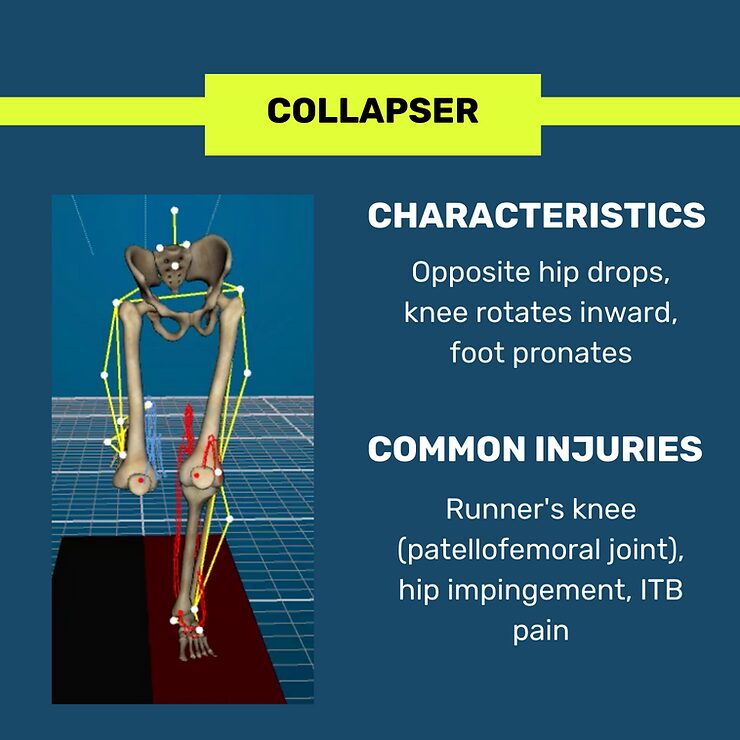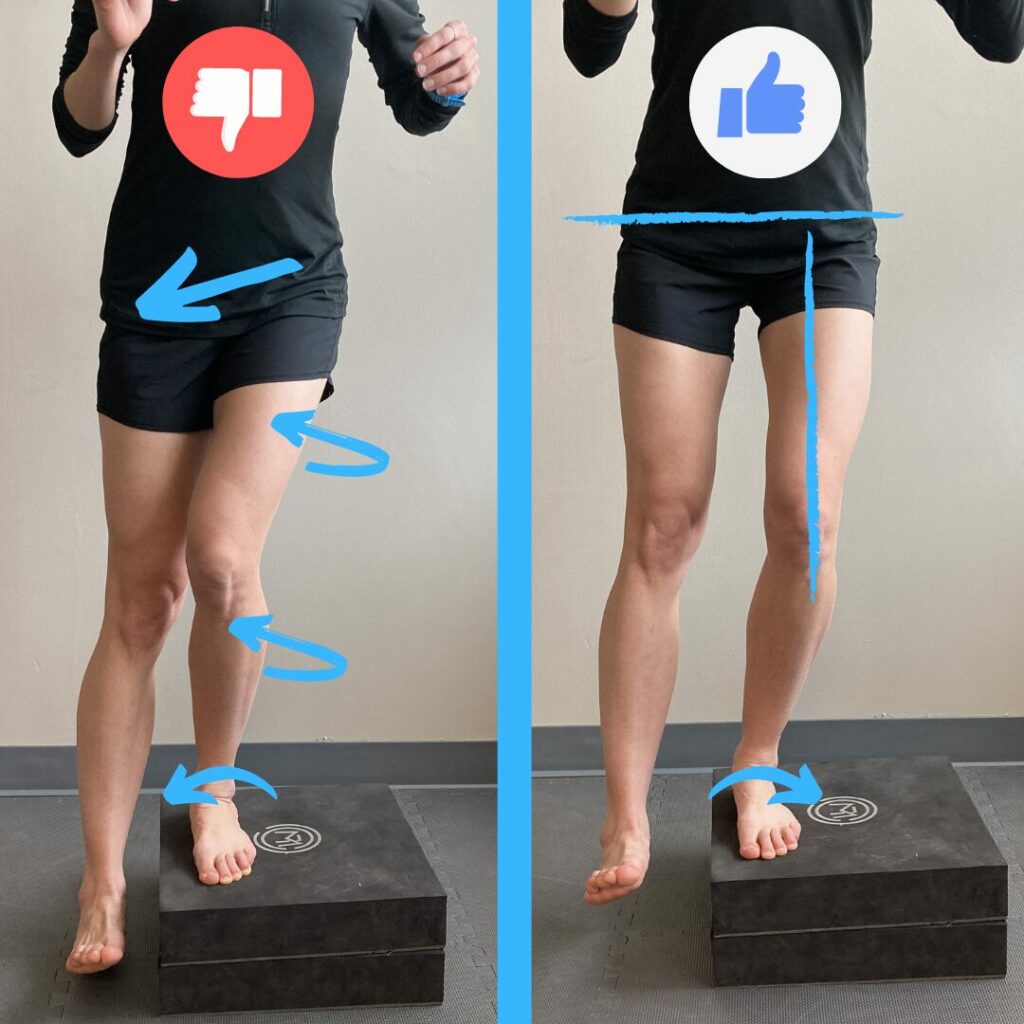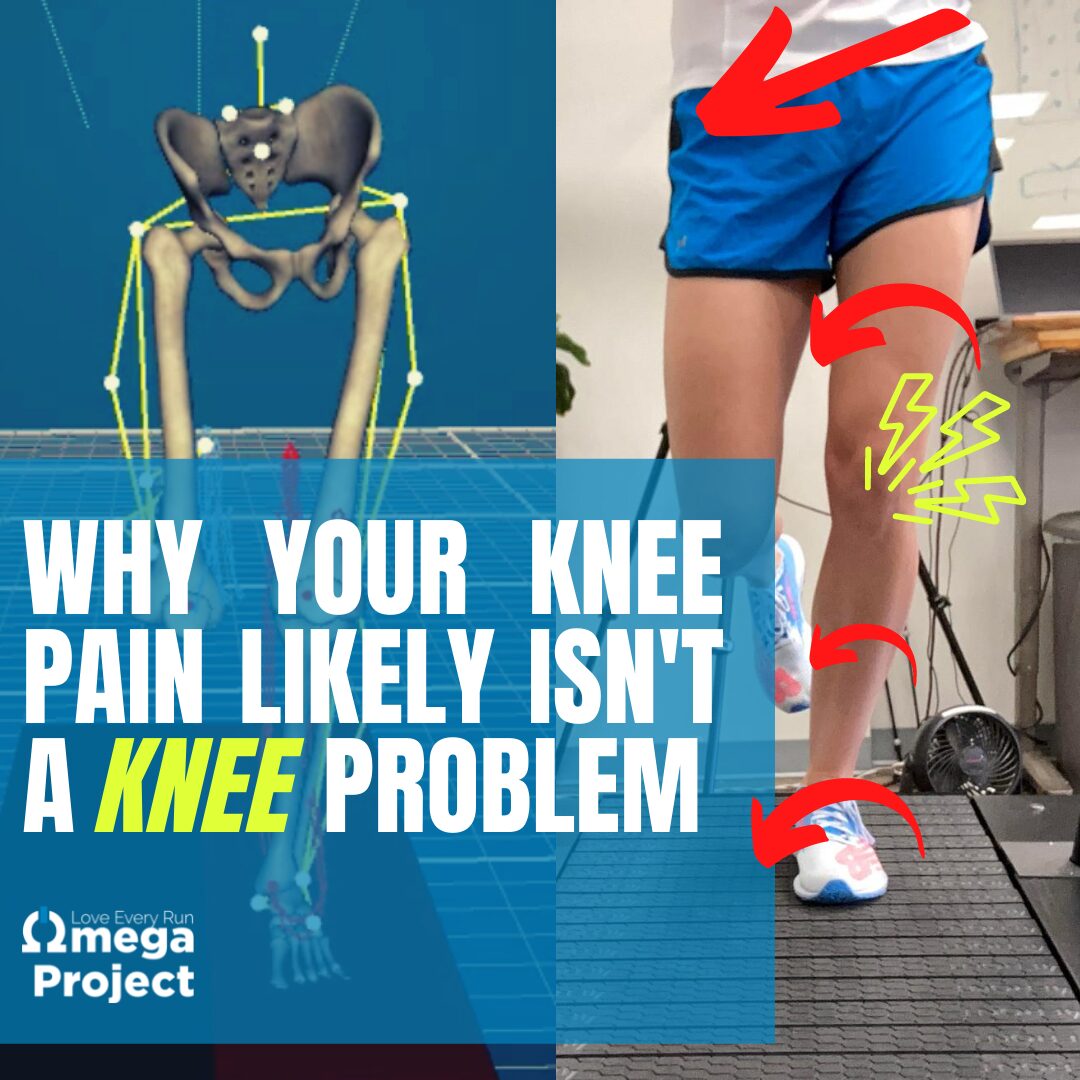Here’s what you need to know: Your knee pain isn’t likely coming from your knee!
If you have knee pain, there’s a good chance you have to look for the problem
somewhere else besides your knee. Even in cases of acute knee injuries, such as ACL tears, there are known risk factors that come from above and below the knee.
Whether you’re currently having knee pain OR want to prevent a knee injury, read below for what you need to know about knee pain.
👇🏻👇🏼👇🏽👇🏾👇🏿
Risk Factors for KNEE PAIN
Collapsing Mechanics – Collapsing is the posture of pronation at the foot (collapsed arch), internal rotation of the leg, and drop of the opposite hip. You can see this in the picture on the right below. Collapsing can occur during squatting, jumping, or running. Several movement limitations can lead to this.
- Limited ankle mobility – If the knee cannot move straight over the center of the foot because the ankle does not dorsiflex (toes toward the nose) enough, you will either rotate the leg in or out to get around the lack of mobility. Your leg still needs to advance forward so you will compensate. More often, pronation of the foot and internal rotation of the leg is the compensation for limited ankle mobility. These compensations place additional strain on the knee, leading to pain.
- Core, pelvic, hip, and foot weakness – A number of things can be weak, leading to collapsing mechanics. What we see most often is weakness in the hips and pelvis that limit your ability to control the hip and leg when you squat or absorb shock while running or landing from a jump. Overall, the strength of the core, pelvis, hips, and feet all need to work together to help with proper alignment during running and jumping.
Quadriceps Weakness – Quad weakness is a risk factor for a knee injury. This is something we always check for in runners and field athletes. Quad weakness can be a predictor of ACL injury. It also plays a big role in absorbing shock during the landing phase of running and jumping.
Running Mechanics – You can read this previous blog post on running mechanics. In summary, no matter how much strengthening and mobilization we do, you may still return to the same movement or gait pattern when you run. Working on your running mechanics can help decrease pain, decrease injury risk, and improve performance.


Knee pain From Osteoarthritis can get better, too!
While the physical change of knee osteoarthritis can’t be reversed, there are things you can do to manage the pain AND improve your knee.
- Quad Strength – Improved quad strength improves your ability to absorb force during the landing phase of running and jumping. The more force your muscles can absorb, the less force your joints have to absorb.
- Hip Mobilization and Strength – If your hips are not moving well, there is going to be more strain through the joints above and below (back and knees). Working on the mobility of the hips can be a game-changer for those who are dealing with knee OA.
- Ankle Mobilization – Good ankle mobility is a top priority for good running mechanics. It allows for good alignment throughout the gait cycle and proper shock absorption during the landing phase. If you’re having trouble squatting because of knee pain, ankle mobility is most likely at fault.
How Do I know what I need to work on When I have Knee Pain?
The best way to know what you need to work on is to get evaluated by a movement professional. As you read above, many causes of knee pain come from outside the knee. If you try some of the typical knee pain exercises and are still hurt, it’s time to get professional help.
There are still things we can address at the knee to treat your pain (e.g., soft tissue tightness of the quad, joint mobility), but these are often caused by or play a role in the development of the other issues mentioned above.
This applies to other injuries, as well, such as injuries to the foot/ankle. You need to look beyond the area of the injury if you want long-lasting results.
If you need help with your knee pain, give us a call or click the link below to set up a free consult!

